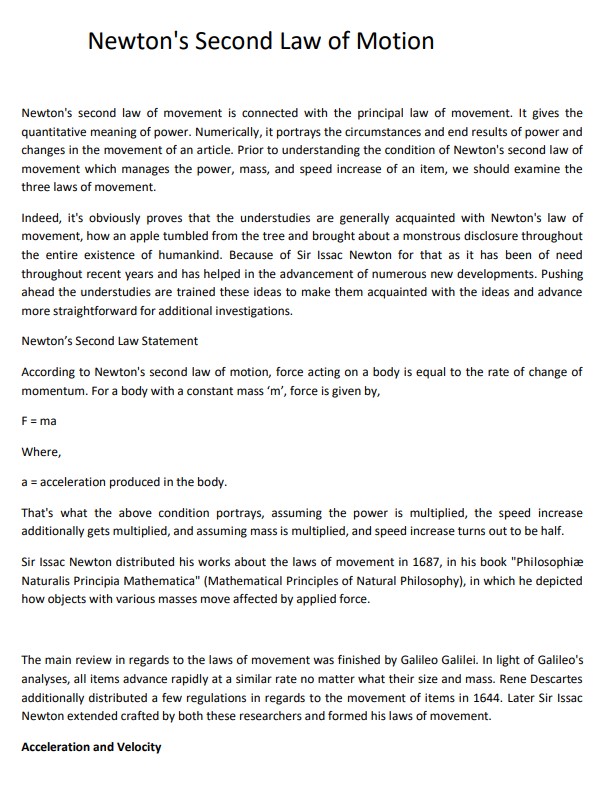Second Law of Motion by Newton
Summary:
The second Law of Motion by Newton, formulated by Sir Isaac Newton, provides a quantitative understanding of force and its impact on the motion of an object. According to this law, the force acting on an object is equal to the rate of change of its momentum. The equation F = ma represents this relationship, where F is the force, m is the mass of the object, and a is the acceleration produced.
The law states that if the force acting on an object is increased, the acceleration also increases while doubling the mass of the object results in halving the acceleration. Newton published his works on the laws of motion in 1687, building upon the findings of Galileo Galilei and Rene Descartes.
Newton’s second law highlights the connection between force and acceleration. When a force is applied to an object, it causes a change in velocity, resulting in acceleration. The direction of the applied force determines the object’s state, whether it accelerates or decelerates.
The equation ΣF = ma emphasizes that forces are vector quantities, meaning they have magnitude and direction. The net force, represented by ΣF, is the vector sum of all the forces acting on an object.
Newton’s second law can be applied to situations involving changing mass and constant mass. In the case of changing mass, the law helps determine the new values of mass and velocity based on the acting force. For a constant mass, the law simplifies to F = ma.
This law finds various applications, such as understanding the motion of vehicles and rockets. It explains how forces affect acceleration and enables calculating an object’s motion under the influence of external forces.
Excerpt:
Second Law of Motion by Newton
Newton’s second law of movement is connected with the principal law of movement. It gives the quantitative meaning of power. Numerically, it portrays the circumstances and end results of power and changes in the movement of an article. Prior to understanding the condition of Newton’s second law of motion, which manages the power, mass, and speed increase of an item, we should examine the three laws of motion.


Reviews